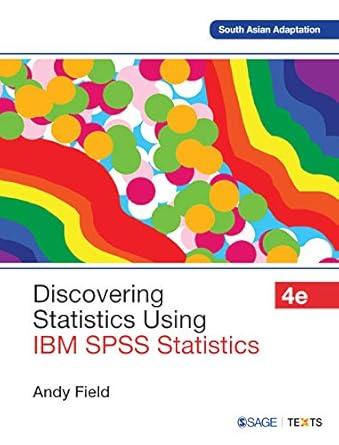Naked Statistics: Stripping the Dread from Data - A Fun and Insightful Read

Statistics often seems like a daunting subject, but Charles Wheelan's book, Naked Statistics: Stripping the Dread from the Data, makes it accessible and even enjoyable. This book breaks down complex statistical concepts using real-world examples and humor, making it a must-read for anyone looking to understand the power of data without getting lost in technical jargon.
Key Takeaways
- Statistics can be both powerful and easy to misuse.
- Real-world examples make complex concepts easier to grasp.
- The book is engaging and accessible, even for those who aren't math enthusiasts.
Introduction to Statistics
Wheelan starts by demystifying statistics, explaining how it can be used to understand everything from batting averages to political polls. He emphasizes that statistics is not just about numbers but about understanding the world around us. The book opens with the classic Monty Hall problem, a probability puzzle that sets the stage for understanding the power of statistical thinking.
Descriptive Statistics
One of the first concepts Wheelan tackles is descriptive statistics, which help us summarize and understand data. He explains how these statistics can be both informative and misleading. For example, the Gini Index measures income inequality but lacks the nuance to show who earns what. This section is filled with real-life examples that make the concepts easy to understand.
Precision vs. Accuracy
Wheelan also delves into the difference between precision and accuracy. Precision is about how exact a measurement is, while accuracy is about how close it is to the truth. This distinction is crucial for anyone working with data, as it helps to understand the limitations and potential pitfalls of statistical analysis.
Correlation and Causation
Another important topic covered is the difference between correlation and causation. Wheelan explains how two variables can be related without one causing the other. He uses the correlation coefficient, which ranges from -1 to 1, to show how changes in one variable are associated with changes in another. This section is particularly useful for debunking common misconceptions about data relationships.
Probability and Risk Assessment
Probability is the study of uncertainty, and Wheelan does an excellent job of explaining its importance. He advises against playing the lottery and recommends long-term investments in the stock market. He also discusses the pitfalls of probability models, such as the VaR (Value at Risk) model, which played a role in the 2008 financial crisis. This section underscores the importance of understanding risk and probability in decision-making.
The Importance of Data Quality
Wheelan stresses that no amount of statistical analysis can make up for bad data. He discusses various types of biases, such as selection bias and publication bias, that can distort research findings. This section is a valuable reminder that the quality of data is paramount in any statistical analysis.
Statistical Inference
Statistical inference allows us to draw conclusions from data. Wheelan explains how researchers use hypotheses to test theories and make predictions. He also highlights the limitations of statistical inference, noting that it is based on probability rather than certainty. This section is essential for understanding how data can be used to make informed decisions.
Regression Analysis
Regression analysis is a powerful tool for understanding relationships between variables. Wheelan explains how it can be used to quantify these relationships while controlling for other factors. He also warns of the pitfalls of regression analysis, noting that it is often the basis for studies reported in the media. This section provides a solid foundation for anyone looking to delve deeper into statistical analysis.
Conclusion
Naked Statistics: Stripping the Dread from the Data is a fantastic introduction to the world of statistics. Wheelan's engaging writing style and real-world examples make complex concepts easy to understand. Whether you're a student, a professional, or just someone curious about the power of data, this book is a valuable resource. It not only makes statistics accessible but also highlights its importance in our everyday lives.
Naked Statistics: Stripping the Dread from Data - A Fun and Insightful Read

Statistics often seems like a daunting subject, but Charles Wheelan's book, Naked Statistics: Stripping the Dread from the Data, makes it accessible and even enjoyable. This book breaks down complex statistical concepts using real-world examples and humor, making it a must-read for anyone looking to understand the power of data without getting lost in technical jargon.
Key Takeaways
- Statistics can be both powerful and easy to misuse.
- Real-world examples make complex concepts easier to grasp.
- The book is engaging and accessible, even for those who aren't math enthusiasts.
Introduction to Statistics
Wheelan starts by demystifying statistics, explaining how it can be used to understand everything from batting averages to political polls. He emphasizes that statistics is not just about numbers but about understanding the world around us. The book opens with the classic Monty Hall problem, a probability puzzle that sets the stage for understanding the power of statistical thinking.
Descriptive Statistics
One of the first concepts Wheelan tackles is descriptive statistics, which help us summarize and understand data. He explains how these statistics can be both informative and misleading. For example, the Gini Index measures income inequality but lacks the nuance to show who earns what. This section is filled with real-life examples that make the concepts easy to understand.
Precision vs. Accuracy
Wheelan also delves into the difference between precision and accuracy. Precision is about how exact a measurement is, while accuracy is about how close it is to the truth. This distinction is crucial for anyone working with data, as it helps to understand the limitations and potential pitfalls of statistical analysis.
Correlation and Causation
Another important topic covered is the difference between correlation and causation. Wheelan explains how two variables can be related without one causing the other. He uses the correlation coefficient, which ranges from -1 to 1, to show how changes in one variable are associated with changes in another. This section is particularly useful for debunking common misconceptions about data relationships.
Probability and Risk Assessment
Probability is the study of uncertainty, and Wheelan does an excellent job of explaining its importance. He advises against playing the lottery and recommends long-term investments in the stock market. He also discusses the pitfalls of probability models, such as the VaR (Value at Risk) model, which played a role in the 2008 financial crisis. This section underscores the importance of understanding risk and probability in decision-making.
The Importance of Data Quality
Wheelan stresses that no amount of statistical analysis can make up for bad data. He discusses various types of biases, such as selection bias and publication bias, that can distort research findings. This section is a valuable reminder that the quality of data is paramount in any statistical analysis.
Statistical Inference
Statistical inference allows us to draw conclusions from data. Wheelan explains how researchers use hypotheses to test theories and make predictions. He also highlights the limitations of statistical inference, noting that it is based on probability rather than certainty. This section is essential for understanding how data can be used to make informed decisions.
Regression Analysis
Regression analysis is a powerful tool for understanding relationships between variables. Wheelan explains how it can be used to quantify these relationships while controlling for other factors. He also warns of the pitfalls of regression analysis, noting that it is often the basis for studies reported in the media. This section provides a solid foundation for anyone looking to delve deeper into statistical analysis.
Conclusion
Naked Statistics: Stripping the Dread from the Data is a fantastic introduction to the world of statistics. Wheelan's engaging writing style and real-world examples make complex concepts easy to understand. Whether you're a student, a professional, or just someone curious about the power of data, this book is a valuable resource. It not only makes statistics accessible but also highlights its importance in our everyday lives.
Naked Statistics: Stripping the Dread from Data - A Fun and Insightful Read

Statistics often seems like a daunting subject, but Charles Wheelan's book, Naked Statistics: Stripping the Dread from the Data, makes it accessible and even enjoyable. This book breaks down complex statistical concepts using real-world examples and humor, making it a must-read for anyone looking to understand the power of data without getting lost in technical jargon.
Key Takeaways
- Statistics can be both powerful and easy to misuse.
- Real-world examples make complex concepts easier to grasp.
- The book is engaging and accessible, even for those who aren't math enthusiasts.
Introduction to Statistics
Wheelan starts by demystifying statistics, explaining how it can be used to understand everything from batting averages to political polls. He emphasizes that statistics is not just about numbers but about understanding the world around us. The book opens with the classic Monty Hall problem, a probability puzzle that sets the stage for understanding the power of statistical thinking.
Descriptive Statistics
One of the first concepts Wheelan tackles is descriptive statistics, which help us summarize and understand data. He explains how these statistics can be both informative and misleading. For example, the Gini Index measures income inequality but lacks the nuance to show who earns what. This section is filled with real-life examples that make the concepts easy to understand.
Precision vs. Accuracy
Wheelan also delves into the difference between precision and accuracy. Precision is about how exact a measurement is, while accuracy is about how close it is to the truth. This distinction is crucial for anyone working with data, as it helps to understand the limitations and potential pitfalls of statistical analysis.
Correlation and Causation
Another important topic covered is the difference between correlation and causation. Wheelan explains how two variables can be related without one causing the other. He uses the correlation coefficient, which ranges from -1 to 1, to show how changes in one variable are associated with changes in another. This section is particularly useful for debunking common misconceptions about data relationships.
Probability and Risk Assessment
Probability is the study of uncertainty, and Wheelan does an excellent job of explaining its importance. He advises against playing the lottery and recommends long-term investments in the stock market. He also discusses the pitfalls of probability models, such as the VaR (Value at Risk) model, which played a role in the 2008 financial crisis. This section underscores the importance of understanding risk and probability in decision-making.
The Importance of Data Quality
Wheelan stresses that no amount of statistical analysis can make up for bad data. He discusses various types of biases, such as selection bias and publication bias, that can distort research findings. This section is a valuable reminder that the quality of data is paramount in any statistical analysis.
Statistical Inference
Statistical inference allows us to draw conclusions from data. Wheelan explains how researchers use hypotheses to test theories and make predictions. He also highlights the limitations of statistical inference, noting that it is based on probability rather than certainty. This section is essential for understanding how data can be used to make informed decisions.
Regression Analysis
Regression analysis is a powerful tool for understanding relationships between variables. Wheelan explains how it can be used to quantify these relationships while controlling for other factors. He also warns of the pitfalls of regression analysis, noting that it is often the basis for studies reported in the media. This section provides a solid foundation for anyone looking to delve deeper into statistical analysis.
Conclusion
Naked Statistics: Stripping the Dread from the Data is a fantastic introduction to the world of statistics. Wheelan's engaging writing style and real-world examples make complex concepts easy to understand. Whether you're a student, a professional, or just someone curious about the power of data, this book is a valuable resource. It not only makes statistics accessible but also highlights its importance in our everyday lives.

















